Surface characterization of nanomaterials and nanoparticles: Important needs and challenging opportunities
- PMID: 24482557
- PMCID: PMC3869349
- DOI: 10.1116/1.4818423
Surface characterization of nanomaterials and nanoparticles: Important needs and challenging opportunities
Abstract
This review examines characterization challenges inherently associated with understanding nanomaterials and the roles surface and interface characterization methods can play in meeting some of the challenges. In parts of the research community, there is growing recognition that studies and published reports on the properties and behaviors of nanomaterials often have reported inadequate or incomplete characterization. As a consequence, the true value of the data in these reports is, at best, uncertain. With the increasing importance of nanomaterials in fundamental research and technological applications, it is desirable that researchers from the wide variety of disciplines involved recognize the nature of these often unexpected challenges associated with reproducible synthesis and characterization of nanomaterials, including the difficulties of maintaining desired materials properties during handling and processing due to their dynamic nature. It is equally valuable for researchers to understand how characterization approaches (surface and otherwise) can help to minimize synthesis surprises and to determine how (and how quickly) materials and properties change in different environments. Appropriate application of traditional surface sensitive analysis methods (including x-ray photoelectron and Auger electron spectroscopies, scanning probe microscopy, and secondary ion mass spectroscopy) can provide information that helps address several of the analysis needs. In many circumstances, extensions of traditional data analysis can provide considerably more information than normally obtained from the data collected. Less common or evolving methods with surface selectivity (e.g., some variations of nuclear magnetic resonance, sum frequency generation, and low and medium energy ion scattering) can provide information about surfaces or interfaces in working environments (operando or in situ) or information not provided by more traditional methods. Although these methods may require instrumentation or expertise not generally available, they can be particularly useful in addressing specific questions, and examples of their use in nanomaterial research are presented.
Figures


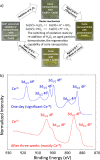






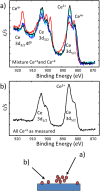
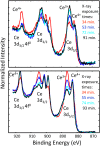



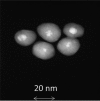

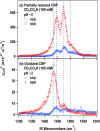

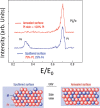
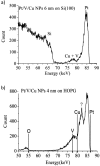
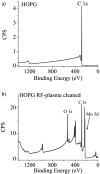
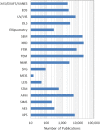
Similar articles
-
In Situ/Operando X-ray Spectroscopies for Advanced Investigation of Energy Materials.Chemistry. 2018 Dec 10;24(69):18356-18373. doi: 10.1002/chem.201803936. Epub 2018 Nov 15. Chemistry. 2018. PMID: 30300939 Review.
-
Interfaces in Heterogeneous Catalysts: Advancing Mechanistic Understanding through Atomic-Scale Measurements.Acc Chem Res. 2017 Apr 18;50(4):787-795. doi: 10.1021/acs.accounts.6b00596. Epub 2017 Feb 16. Acc Chem Res. 2017. PMID: 28207240
-
The future of Cochrane Neonatal.Early Hum Dev. 2020 Nov;150:105191. doi: 10.1016/j.earlhumdev.2020.105191. Epub 2020 Sep 12. Early Hum Dev. 2020. PMID: 33036834
-
Probing electrode/electrolyte interfaces in situ by X-ray spectroscopies: old methods, new tricks.Phys Chem Chem Phys. 2015 Nov 11;17(45):30229-39. doi: 10.1039/c5cp04058b. Phys Chem Chem Phys. 2015. PMID: 26514115
-
Traceable Characterization of Nanomaterials by X-ray Spectrometry Using Calibrated Instrumentation.Nanomaterials (Basel). 2022 Jun 30;12(13):2255. doi: 10.3390/nano12132255. Nanomaterials (Basel). 2022. PMID: 35808090 Free PMC article. Review.
Cited by
-
A Review on Polymer Nanocomposites and Their Effective Applications in Membranes and Adsorbents for Water Treatment and Gas Separation.Membranes (Basel). 2021 Feb 16;11(2):139. doi: 10.3390/membranes11020139. Membranes (Basel). 2021. PMID: 33669424 Free PMC article. Review.
-
The Chameleon Effect: Characterization Challenges Due to the Variability of Nanoparticles and Their Surfaces.Front Chem. 2018 May 7;6:145. doi: 10.3389/fchem.2018.00145. eCollection 2018. Front Chem. 2018. PMID: 29868553 Free PMC article.
-
An unexpected phase transformation of ceria nanoparticles in aqueous media.J Mater Res. 2019 Feb;34(3):465-473. doi: 10.1557/jmr.2018.490. Epub 2019 Feb 1. J Mater Res. 2019. PMID: 33776202 Free PMC article.
-
Nanoparticle modification in biological media: implications for oral nanomedicines.RSC Adv. 2019 Dec 6;9(69):40487-40497. doi: 10.1039/c9ra08403g. eCollection 2019 Dec 3. RSC Adv. 2019. PMID: 35542629 Free PMC article. Review.
-
Organ-on-a-chip technology for nanoparticle research.Nano Converg. 2021 Jul 8;8(1):20. doi: 10.1186/s40580-021-00270-x. Nano Converg. 2021. PMID: 34236537 Free PMC article. Review.
References
-
- Stuart C., Small Times 6, (2006); http://www.electroiq.com/articles/stm/2006/03/particle-size-matters-stud...
-
- Nat. Nano 7, 545 (2012).
Publication types
Grants and funding
LinkOut - more resources
Full Text Sources
Other Literature Sources
Research Materials
